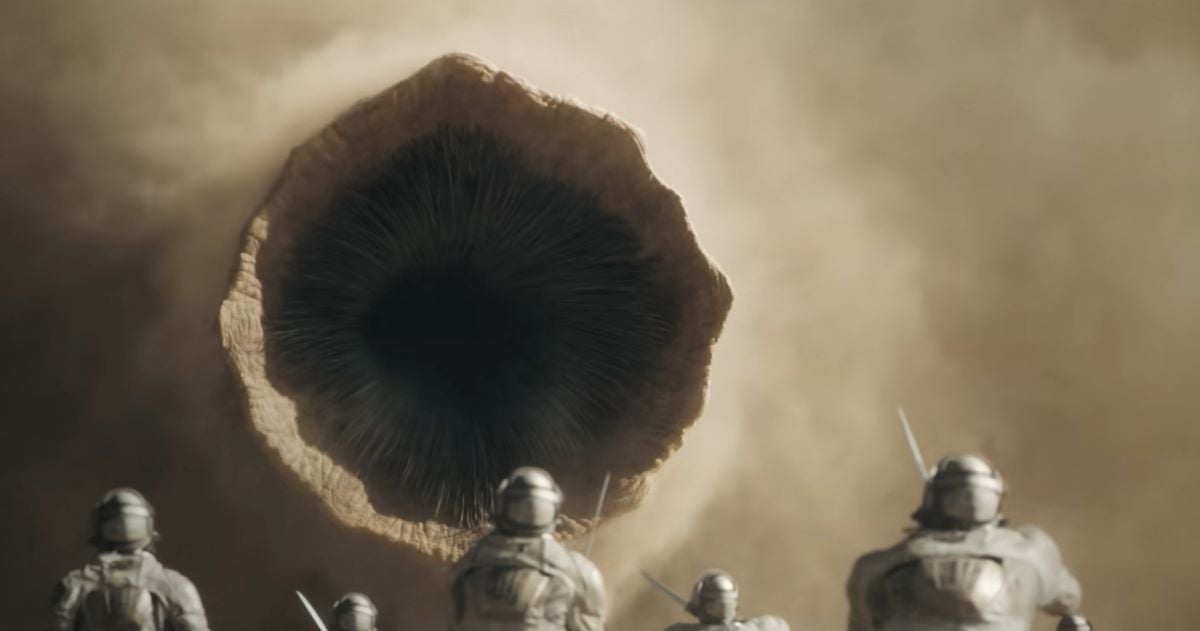Dune: Part Two, Denis Villeneuve’s most staggering sci-fi epic yet, is shaping up to be the type of cinematic roller coaster that audiences are more than ready to ride.
The film, which hit theaters a week ago, has already earned more than its $190 million budget back with a worldwide gross of $367 million so far. And the film isn’t leaving theaters anytime soon, to say nothing of those moviegoers looking to ride that sandworm as many times as possible.
This leads us to the big question: How exactly do Paul and the Fremen manage to dismount their hazardous, slippery steeds as they soar through the sands? In a recent interview with IndieWire, Denis Villeneuve said he has figured out the choreography. But for those of you who have read the books, you’ll know that he didn’t really need to.
“I knew how. I found a way. It was not dramatically necessary in Dune: Part Two to see someone get out of the worm, but I know how to do it. And I can’t wait to put that on screen.”
Indeed, it’s somewhat peculiar that Villeneuve claims to have found a way when the sandworm-dismounting method was outlined by Frank Herber in the film’s source novels.
Simply put, the hooks that the Fremen use to anchor themselves to the sandworm don’t exactly tickle. Once the worm runs out of stamina and subsequently begins to slow down, the rider can safely remove the hooks from the sandworm’s skin. The worm then sinks back down into the sand in search of respite, doing so at a sluggish enough pace for the rider to dismount without any trouble.
Of course, that description doesn’t sound entirely befitting for an IMAX screen. Judging by Villeneuve’s language here, it sounds like he has a much more entertaining stunt in mind for Timothée Chalamet and company to pull off in the third Dune movie. Perhaps it’s best the filmmaker didn’t do his homework in this particular case.
(featured image: Warner Bros. Pictures)










Published: Mar 10, 2024 9:02 PM UTC